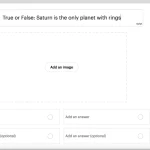At some point, students and professors are going to stumble across the term, learning goals. Initially, they may believe that learning goals and learning targets are identical. In reality, there are key differences between the two. Typically, the learning goal is the standard and each teaching unit is carefully selected to help reach said goal.
As for learning targets, they tend to be smaller than the learning goal. They are targets that the student will reach as they attempt to accomplish the bigger learning goal. The teacher is tasked with ensuring that the student reaches the standard or the learning goal. To get there, they will have to accomplish multiple learning targets.
The latter term is used to describe the steps the student will take to reach the standard. More about the two can be found below.
Basics
Teachers and students should learn more about learning goals and targets. Learning targets are helpful because they help guarantee that the teacher can effectively guide their students to success. They also help teachers become aware of the behaviours the student should exhibit once they fully understand the topic. Learning goals are bigger goals that are usually part of the educational standards.
The defined learning targets are steps that the student will complete to reach the goal. These targets should be identified and explained in simple terms to make sure that the student can understand them.
Multiple Learning Targets
As mentioned before, learning targets must be reached before the student can accomplish the learning goal. Some may suspect that there is an exact number of learning targets for each learning goal, but this is not the case. Instead, it will depend on the unique circumstances of the learning goal. Certain goals are less complicated than others so there may be fewer learning targets.
As an example, a student may be asked to study a book and try to discover its ultimate meaning. Before the student can do that, they will have to complete several learning targets, such as studying the characters, analysing the plot, and identifying the theme. As a result, there could be three or four learning targets for this specific learning goal.
Both Help Teachers
Thankfully, these terms can be very helpful for modern teachers and professors. Before a teacher can build an effective study plan, they must know the end goal. Usually, this is predetermined for them as part of the curriculum. It could be the standard in education for the grade level. Once the teacher knows what their students should learn, they can begin working to build a plan to ensure that this happens.
Teachers can use this information to create more effective study plans for their students. After each learning target, it is wise for students to complete a formative assessment. The assessment is designed to ensure that the students have gained a sufficient understanding of the subject.
If more attention is needed, the teacher can help the students cover these topics once again until they can complete the assessment without issues.
They Also Help Students
The student is also going to benefit greatly from the use of learning goals and learning targets. They likely won’t set these things, but they will be required to follow them until they achieve the learning goal. To achieve the best results, teachers should use a combination of self-reporting activities to ensure the student knows more about their progress.
They can also give the student feedback and help them reduce their anxiety about the learning goal. In terms of self-reporting, the student should attempt to reflect on his or her current understanding of the goal. They should also know what they want to achieve by the end of a specific learning target. Utilising learning goals and targets can be helpful for keeping the student focused and engaged.
Feedback is critical and should be provided using formative assessments after each learning target. Some students may pick up on these things faster than others. By gaining feedback, it’ll be possible to ensure that all students have learned enough before moving forward. Finally, breaking down learning goals into smaller targets can help reduce anxiety.
Students often struggle to deal with anxiety when they’re overwhelmed. Using learning targets is a good way to avoid trying to tackle too much at once.
Improved Focus To Achieve Success
Studies show that the biggest obstacle for teachers and students is focus. Teachers of all grades struggle to keep their students focused on the tasks in front of them. Educational tools have proven to be helpful but none seem to work as well as the technique that breaks down learning targets and learning goals.
The strategy allows teachers to help their students work on their concentration skills in the classroom. The teacher picks a learning target. Students strategise to find what is necessary to reach the learning target.
Experts believe the practice helps students to achieve goals with minimal stress. It is vital for teachers to explain the process to their students in advance. This will help minimise any confusion that may come up later on down the road.
In Use
Learning targets and goals can be effectively used in various circumstances. They are suitable for grade schools, high schools, universities, and more. Professors and administrators should work together to identify the most pertinent learning goals. Then, a plan should be devised with multiple learning targets to ensure that students accomplish these goals.
Truthfully, the theory should be used in any educational environment.
Summary
Schools across the world should begin using learning goals and learning targets to ensure that their students are achieving the maximum amount. Typically, the learning goal is predetermined by modern standards. As for the learning targets, it is up to the school’s teachers and administrators to develop an effective curriculum. Targets should be carefully selected to ensure that they’re going to help the student reach the end goal.
Furthermore, students should complete assessments at the end of each stage to ensure that they fully comprehend the subject. By using these techniques, the student will achieve more and develop a more in-depth understanding of the topic.
Author Profile
-
My first experience of teaching was in 2016, when I was asked to
deliver a talk to a group of 16-year-olds on what it was like to start
your own business. I immediately knew I wanted to become more
involved in teaching but I didn’t know where to start as I had not
previously considered a career in education. A few weeks later I
agreed to teach a class of Chinese students from the Shanghai
Technical Institute of Electronics and Information, who had travelled
to the UK to learn English and Software Engineering, after that I was
hooked. Within the next few years, I taught hundreds of students of
many different nationalities, aged from 16 to 60, and from
levels 2 to 6. I focused my time teaching with Bath University and
Bath College for several more years until I felt a change was in order.
For the last few years, I have taught remotely with several private
training organisations, provided dedicated one to one coaching
sessions, provided consultancy on teaching and assessment practices
and written about my experiences as a teacher. I plan to continue
with my current activities for the foreseeable future but I’m always
open to new teaching experiences.




